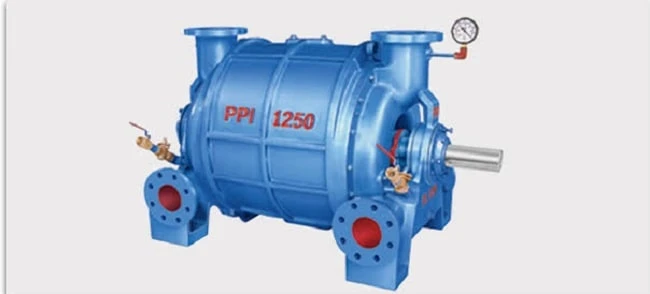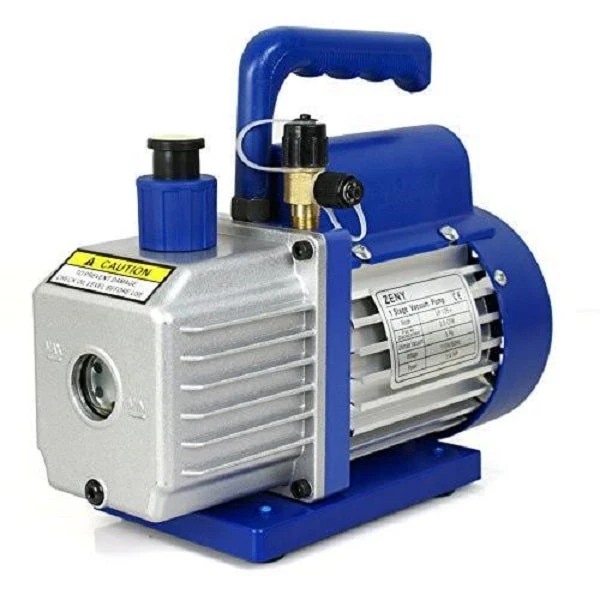by Kimberly Hill
A vacuum is one utility that’s commonly applied in a wide array of manufacturing processes. For instance, it is used when bottling, packaging, degassing, drying, pick, and a place, among others. That means vacuum pumps help to create, improve, and maintain vacuum in such spaces. It’s essential to beware of the features, advantages, and the technology behind its operating principle. This article reviews the common types of vacuum pumps and the best ways to apply them.
Contents

When a process needs low vacuums, then the positive displacement pumps work best. The reason is that its design allows it to expand the cavity to make the gases inside to flow out from the sealed chamber or environment. After which the hole gets sealed and causing the air to dissipate into the atmosphere.

This type of pump operates behind the principle of creating a vacuum through the expanding volume in some containers. When a mechanism is expanding in a small cavity that’s sealed, it creates a deep space. As the pressure develops, some amount of fluid inside the chamber gets pushed to enter the small hole of the pump. Once done, the pump’s cavity gets airtight in the room, then opens to the air and squeezed to a small size.
One example of where a positive displacement vacuum pump is applied is in the manual water pumps, roots blower, and liquid ring vacuum pump. Because they expand to cause an increase in the volume inside, many industries highly use them. During expansion, a partial vacuum results in reducing pressure-filled with air that is pushed within by the atmospheric pressure.
Liquid ring pumps are the same as rotary vane pumps and can be either multistage or single. But the vast difference is in the fact that the vanes form an essential element of the rotor. It helps in churning the rotating ring in the liquid to make the compression-chamber to seal. The design is naturally low-friction with only the rotor as the moving part. The sliding friction is restricted to its shaft seals, and the system is mostly powered with an induction motor. With a single cycle, the same amount of gas is moved to make its speed of pumping constant.
This type of vacuum pump has its gas molecules accelerated from the side that is vacuum to the exhaust end. Following the fluid dynamics laws, the matter can flow in different ways at different pressures. In mild volumes and atmospheric pressure, the particles interact with another while also pushing the nearby molecule. Even when the space between the particles increases, the interaction process frequently occurs on the walls of the chamber and not to the other units,

Generally, the stage here creates a high vacuum making the pumps much more effective. Momentum transfer vacuum pumps are categorized into two types, including diffusion and turbomolecular pumps. Both designs can blow out air molecules that nearby the pump. The only difference between the two is that diffusion pumps work by jetting out oil, while, turbomolecular ones utilize high-speed fans. However, exhausting the shoes directly to the atmosphere can make them stall and even fail to pump.
This type of vacuum pump works by chemical reactions. Thus, they are mainly known to be more effective since they put in the container or space that needs vacuuming. Air particles inside create a thinner film that is removed with the pumps while they are chemically reacting to its surfaces. The main aim of using such pumps is to help safely remove hazardous materials, thus saving the surroundings from toxic wastage.

It is therefore known as a cryopump since it works in cold temperatures. That means the gases inside are condensed to become stable, hard, or even get absorbed. For the compression to create ultrahigh vacuum cavities, entrapment pumps must be used together with positive displacement pumps and momentum transfer pumps. As a result, the gases produce a hard deposit, if not, the ion pump will use strong electrical fields for pushing the ions plus ionize the gases to form a solid substrate. This type of pump works best as the titanium sublimation, sorption, and non-evaporative pumps.
Regenerative pumps are used to pump fluids and are utilized where incredible delivery is required with little volume streams. Besides, regenerative pumps can handle substantial gas extents without any interrupts to the fluid stream, unlike other pumps. This pump utilizes vortex actions fluid, especially the air. It is mainly constructed based on the hybrid principle of centrifugal pumps and turbopumps. Generally, this system consists of many sets of straight teeth on its rotor. The elements help to circulate air molecules within stationary void grooves. This action is like what happens in multistage centrifugal pumps.
In case the pump is used with a Holweck pump, it can reach up to 1×10−5 mbar. With such force, it can exhaust directly to the atmospheric pressure. For the fact it has a high rate of pumping, it is sometimes called a side-channel pump. As a result, many manufacturing industries use these pumps to load lock in semiconductor processes.

This sort of pump encounters a considerable power consumption differentiated to other pumps at low-pressure as the more significant part of the power utilized to turn around atmospheric power. It tends to be diminished multiple times with a little pump. It’s installed on the fume’s side to leave high vacuums and guarantee less pollution. This pump must expend a high intensity at less pressure since most of the energy reclaimed is taken to atmospheric pressure.
In conclusion, the most common functions of vacuum pumps are to remove gases, air, and vapor from confined spaces to create a vacuum. They are available in different designs; thus, various industries have a wide range of applications for the pumps. From positive displacement to momentum transfer, and entrapment pumps, every sector will find something suiting their needs. Of course, the technologies used in the units allows them to take out gas from a sealed space to leave it partially vacuum. The process, as a result, causes pressure difference pushing fluids to rush inside the gap.

About Kimberly Hill
Now it is just me, Kimberly Hill living in New York city, N.Y.
Loves to blog about various aspects of life that matter most.
Received the BA degree in Art History from Stanford University of California.
 |
 |
 |
 |
Popular Posts